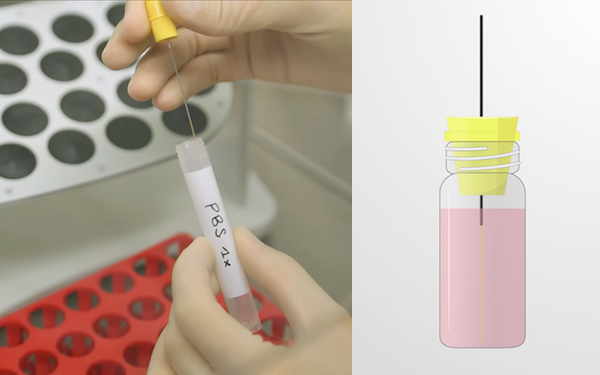For years, scientific researchers have encountered the need to travel for training. Sometimes, this involves traveling to laboratories on the other side of the country — or even the world — to learn an essential research method under the guidance of an expert. At other times, scientists who have developed cutting-edge methods must visit other labs themselves, to train their colleagues in person.
When Royal Marsden NHS Foundation Trust researchers Dr. Anna Kirby and Dr. Frederick Bartlett developed a technique for shielding breast cancer patients’ hearts from radiation during radiotherapy, this is precisely what they had to do. Researchers around the world wanted to adopt their novel protocol, and the doctors received dozens of requests for training. However, each request necessitated sending three staff members to on-site locations: an endeavor that would involve a significant amount of time, money, resources and paperwork.
Virtual Lab Training: A Better Alternative?
It was clear that traveling to geographically dispersed locations to conduct lab training was not the most feasible option. Today, this continues to become increasingly apparent, as a number of factors have highlighted the need for a more practical approach to lab training, including:
— several months of global travel restrictions in a pandemic-ridden world
— the environmental costs of air travel
— the expenses associated with hosting researchers
— the cost of visiting other labs for short-term training programs
For Dr. Kirby and Dr. Frederick, that approach was available with JoVE: virtual lab training with video. They published their protocol in a video format in JoVE, providing a detailed, step-by-step visual demonstration of their method alongside a detailed text article with instructions and a list of materials. By publishing their method as a video, they were able to highlight minor but critical details that could make or break the experiment, conveying exactly what would be conveyed in in-person lab training. The protocol was then shared with thousands of clinicians in 36 countries.
The video has now been viewed more than 37,000 times and cited 44 times in scientific publications. For 9 out of 10 requests for the technique, the video was found to be a sufficient virtual lab training resource with no additional explanation required. “[The JoVE video article] has saved us a huge amount of time in terms of not having to host multiple visits or indeed travel ourselves. We’re saving ourselves money, and we’re saving other people a bit of money,” said Dr. Kirby. “The potential for disseminating across the world is massive and there is no realistic alternative to this,” added Dr. Bartlett.

Over $15,000 Saved on Lodging, Travel & Training
When lab training goes virtual, costs can be saved both ways. Many researchers find themselves having to apply for travel grants for training in foreign institutions, or use their lab funding, to see a complex experiment being performed at another lab. Why must the widespread dissemination of essential knowledge to the scientific community be so time- and resource-intensive?
When Dr. Theresa Casey — a research assistant professor in animal sciences at Purdue University’s Plaut Lab (West Lafayette, Indiana) — needed to learn the technique for suprachiasmatic nucleus surgery, she would have had to visit Buffalo, New York, for in-person training with a collaborator. The trip would have also cost a few days and thousands of dollars for the round-trip flight, food, accommodation and related expenses.
However, Dr. Casey was able to find the exact protocol she was searching for as a JoVE video article, published by the lab of Dr. Gabriella Lundkvist at Sweden’s Karolinska Institutet. By using the video as a virtual replacement for in-person training in the lab, the lab was able to save about $15,000 on the costs of travel, lost wages that would have been involved in team training, and reagents that would have been required for trial-and-error learning. “I’ve been doing research for 20 years, and having JoVE makes things so much easier,” Dr. Casey said.
Train with JoVE videos
With JoVE, efficiently disseminating scientific knowledge — be it across cities, countries or continents — has never been easier. Read about how you can publish your method with JoVE, or explore our library of 13,000+ videos to find the experiment you’ve been looking for. We’ve also curated playlists of JoVE videos for several different training programs.



